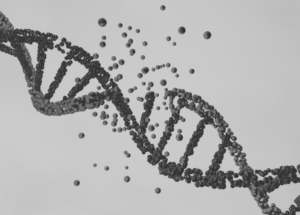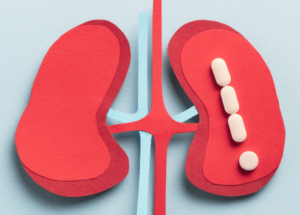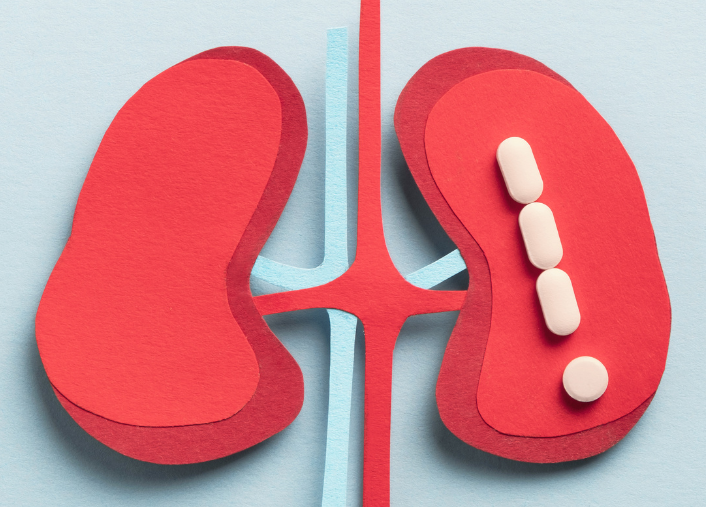A Full Walkthrough Of The LifeDNA’s Personality & Cognition Report
sabeeh
on
August 16, 2024
Are Personality Traits Genetic?
The question of whether personality traits are genetic is a crucial one in understanding human behavior. This topic lies at the intersection of genetics and psychology. It seeks to determine how our genetic makeup influences our personality traits. Scientifically, personality traits refer to enduring patterns of thoughts, feelings, and behaviors that differ among individuals.
Genetic research, particularly in behavioral genetics, has made significant strides in studying this issue. Studies involving twins, especially identical twins who share the same genetic material, have been instrumental in shedding light on the genetic contribution to personality traits. These studies typically compare the similarities in personality between identical twins and fraternal twins, with the former sharing more genetic similarities.
Additionally, researchers have used genome-wide association studies (GWAS) to identify specific genetic variations associated with personality traits which will be discussed in more detail in the upcoming sections. These studies have found that no single gene determines a personality trait; rather, multiple genes influence these traits, each having a small effect.
However, it is vital to note that genetics is not the sole determinant of personality. Environmental factors, such as upbringing, cultural influences, and personal experiences, also significantly shape our personalities. The interaction between genetics and environment (often called ‘nature versus nurture’) is complex and contributes to developing our personality traits.

Section Summary
Investigating whether personality traits are genetic reveals that while there is a significant genetic component, various environmental factors also shape our personality. This field remains an active area of research, with ongoing studies aimed at unraveling the intricate balance between our genetic predispositions and the experiences that mold our personalities.
Dissecting The Genetics Of Personality Traits
Here is a breakdown of how genetics play a role in personality traits:
Genetic Influence
Research has shown that genetic factors contribute significantly to developing personality traits. Studies involving identical twins raised apart have provided evidence for the heritability of traits. For example, research shows that extraversion, neuroticism, and agreeableness have varying degrees of heritability.
The heritability of these traits is typically estimated to be between 30% and 60%, indicating a substantial genetic contribution. We can attribute some variability across individuals in these traits to genetic differences.
Role of Specific Genes
While it is clear that genes contribute to personality, identifying specific genes and their mechanisms has been challenging due to the complexity of these traits. Personality traits are polygenic, meaning many genes influence them, each contributing a small effect. Genes that affect neurotransmitter systems, such as those involving dopamine and serotonin, are especially interesting because they affect various aspects of mood regulation and cognitive processes.
Gene-Environment Interactions
Environmental factors often influence the expression of genetic predispositions in personality traits. For instance, a person might have a genetic disposition towards high extraversion. But if they grow up in an environment that discourages social interaction, it might develop partially. Similarly, environmental stressors or opportunities can trigger or suppress genetic potentials in personality.
Epigenetics
Epigenetics, which involves changes in gene expression without altering the DNA sequence, also plays a role in personality development. Environmental factors can cause epigenetic modifications that may influence how personality-related genes are expressed.
Limitations of Genetic Determinism
It is critical to avoid oversimplifying the role of genetics in personality. While genetics provides a framework, it does not determine one’s personality. The development of personality traits is a dynamic process involving genetic predispositions and a wide range of environmental influences, including culture, family, experiences, and personal choices.
Section Summary
Personality traits are partially genetic and interwoven with many environmental factors. The development of personality is a complex and dynamic process that reflects our biological heritage and the diverse experiences of our lives.
The LifeDNA Personality & Cognition Report
The LifeDNA Personality Report covers 41 traits and offers a fascinating insight into how genetics can influence various aspects of personality. This report utilizes advanced genetic analysis to explore the potential genetic underpinnings of an individual’s personality traits.
The report provides a unique perspective on various traits by examining specific genetic markers. It includes fun traits like musical ability, creativity, neuroticism, optimism, and openness to more serious ones like depression, social rejection, and aggressive behavior. Experience the LifeDNA Personality & Cognition report to understand the complex interplay of genetics and personality.
LifeDNA Personality & Cognition Report Walkthrough
Friendship Satisfaction refers to the level of contentment and happiness an individual derives from their friendships. This trait is moderately heritable, with genes like OXTR playing a role in social bonding and thus potentially influencing friendship satisfaction.
Sensitivity to Beta-Ionone Odor is detecting and responding to the smell of beta-ionone, a compound found in many flowers and fruits. Variations influence the heritability of this trait in olfactory receptor genes, such as rs6591536, in OR5A1.
Multitasking involves the capability to handle more than one task simultaneously (cognitive flexibility). The heritability of multitasking ability is complex, but genes affecting cognitive functions and attention, such as COMT, may play a role.
Abstract Reasoning is the capacity to understand complex concepts and ideas not grounded in physical reality. It has a significant genetic component, with genes like ASPM and MCPH1 associated with brain development and cognitive abilities.
Agreeableness is a personality trait characterized by compassion and cooperativeness. It has a heritability component. Genes like OXTR, have been shown to be associated with extraversion and agreeableness,
Creativity involves the power to produce original and valuable ideas. Creativity has a genetic component. For example, rs2576037 polymorphism in the KATNAL2 gene affects fluency and originality. Additionally, the study identifies a link between the rs5993883 polymorphism in the COMT gene and the rs362584 polymorphism in the SNAP25 gene with performance on the Remote Associates Test (RAT), a measure of convergent thinking.
Educational Attainment is often defined as the highest level of education an individual achieves. Numerous genes influence cognitive abilities and learning processes. A 2013 GWAS, involving a discovery sample of 101,069 individuals and a replication sample of 25,490 individuals, identified three independent SNPs – rs9320913, rs11584700 (LRRN2), and rs4851266 (LINC01104). These SNPs were significant at the genome-wide level and were replicated successfully in the second sample.
Hearing Function is the power to perceive sound. Genetic factors can influence it. Research showed variations in the SIK3 gene affecting the hearing function.
Instant Gratification refers to the preference for immediate rewards over future benefits. A 2017 study on 23,217 European participants indicated the influence of rs6528024 SNP in the GPM6B gene.
Musical Ability encompasses skills in areas like rhythm, pitch, and melody. A 2012 genomic analysis showed a strong association between UGT8 variants (e.g. rs12510781) and musical ability.
Neuroticism is a personality trait associated with emotional instability, anxiety, frustrations, and fear. A 2016 GWAS found a genetic link between variations in the L3MBTL2 gene and neuroticism.
Positive Affectivity represents a predisposition to experience positive emotions. Genes like LINC01221 influence the heritability of this trait.
Resilience refers to the power to recover quickly from difficulties. Genes related to stress response, like FKBP51 and LINC01221, have been shown to influence this trait’s heritability.
Read our in-depth analysis of the Genetics Of Resilience.
Sensitivity to Stimuli is how an individual reacts to environmental inputs. Genes affecting sensory processing, like DRD2 and DBH, may play a role in its heritability.
Frequency of Playing Computer Games might be influenced by genetic factors related to reward-seeking behavior and dopamine regulation. A 2022 study showed an association between the DRD2 gene and problematic gaming.
Guilty Feeling is a complex trait related to conscience and moral sensitivity, with its heritability potentially influenced by genes affecting emotional regulation and empathy, such as OXTR. A 2014 study revealed that participants with the GA or GG genotype at the rs53576 SNP in the OXTR gene were more inclined to engage in self-punishment than those with the AA genotype.
Mood Swings can be influenced by genetic variations in neurotransmitter systems, like serotonin and dopamine pathways, which affect mood regulation. This 2017 GWAS unraveled several candidate genes for their potential influence on mood stability.
Social Rejection sensitivity could be heritable, with genes involved in social cognition and emotional regulation, such as OPRM1, potentially playing a role.
Aggressive Behavior has a genetic component, with genes like OXTR influencing neurotransmitter systems that regulate aggression.
Depression is a complex mood disorder with a significant genetic component. A 2019 GWAS included a total of 807,553 individuals, comprising 246,363 cases (individuals with depression) and 561,190 controls (individuals without depression). The study successfully identified 102 independent genetic variants and 269 genes associated with depression.
Read our in-depth analysis of the Genetics Of Depression.
Emotional Support Seeking may have genetic underpinnings related to social bonding and empathy, potentially involving genes like OXTR.
Gambling behavior can have a genetic aspect, with genes influencing reward and risk-taking behaviors, such as those in the dopamine pathways, playing a part. A large-scale 2012 GWAS examined 2.38 million SNPs and uncovered six promising SNPs across three genes – MT1X, ATXN1, and VLDLR that influence gambling.
Harm Avoidance is a trait linked to anxiety and fearfulness, with a moderate heritable component.
Impulsivity involves acting without forethought, and genetic factors influence it. Dopamine and serotonin-related genes like HTR2B and HTR1A are associated with impulsive behavior.
Ability to Detect Grassy Aroma is linked to the olfactory system’s genetic variations, such as specific olfactory receptor genes that enable the detection of certain scents.
Intergenerational Transmission of Qualities refers to the hereditary passing of traits from parents to offspring. This transmission is a complex interplay of numerous genes influencing various traits.
Verbal Memory is the power to recall words and language-based information. It has a genetic component, with genes like TOMM40 and PVRL2 linked to memory-related cognitive functions.
Extroversion vs Introversion is a fundamental personality dimension, with its heritability influenced by genes affecting neurotransmitter systems, such as dopamine pathways.
Hypnotizability refers to the susceptibility to hypnosis, and genes affecting brain function and cognitive processes, like COMT, might influence its heritability.
Mathematical Ability is influenced by genetic factors. A meta-analysis of three cohorts revealed that four specific SNPs in the SPOCK1 gene are associated with mathematical ability.
Openness is a personality trait associated with creativity and intellectual curiosity. It is partially heritable, with genes influencing cognitive and emotional processing playing a role.
Sensitivity to Blue Cheese Aroma involves the genetic variation in olfactory receptors, influencing the capability to detect and distinguish different scents.
Reward Dependence is the tendency to respond markedly to rewards, influenced by genetic variations in the brain’s reward system, particularly dopamine-related genes.
Perceptual Speed refers to the power to quickly and accurately process visual information, with its heritability influenced by genes related to cognitive function and brain processing speed.
Conscientiousness is a personality trait characterized by organization and dependability. Genes affecting brain function and temperament might influence its heritability. A 2010 meta-analysis showed a strong link between the rs2576037 variation in the KATNAL2 gene and conscientiousness.
Fear of Pain can be influenced by genetic factors. A 2017 meta-analysis identified several genetic loci significantly associated with the fear of minor pain, located near the genes TMEM65, NEURL1, NEFM, NEFL, AGPAT4, and PARK2.
Loneliness is a complex emotional state with a genetic component. Genes affecting social bonding and neurotransmission may influence this trait.
Optimism is the tendency to expect positive outcomes, and genes affecting mood regulation and cognitive bias can influence its heritability.
Risk-taking is the propensity to engage in behaviors with potentially unfavorable outcomes. A 2018 GWAS on self-reported risk-taking behavior using white British participants from the UK Biobank cohort analyzed 83,677 individuals identified as risk-takers and 244,662 controls. Researchers conducted a secondary analysis to examine sex-specific effects, differences across ethnicities, and the genetic relationship between risk-taking and psychiatric traits. The study successfully identified ten independent genetic loci linked to risk-taking behavior, with eight discoveries and two confirming previous findings.
Worrying After Embarrassment involves the tendency to feel anxious following embarrassing situations. Genetic factors affecting emotional regulation, such as serotonin transporter genes, may play a role in this trait’s heritability.
Maternal Sensitivity refers to a mother’s ability to perceive, interpret, and appropriately respond to her child’s cues, needs, and emotions. It encompasses a range of behaviors and attitudes that foster a secure, supportive, and nurturing environment for the child. A 2011 study demonstrated that maternal genotype could predict variations in maternal sensitivity six months postpartum. Specifically, mothers possessing an S (or functionally similar LG) allele of rs25531 (5-HTTLPR) exhibited higher sensitivity than those without the allele during a 30-minute recorded mother-infant interaction.
Why LifeDNA?
LifeDNA has emerged as a prominent option for analyzing 23andMe and raw data from many other sources, owing to a combination of unique offerings and a commitment to personalized wellness.
We offer a basic DNA raw data analysis package to kickstart your journey. Users with raw data from 23andMe, AncestryDNA, etc., can access 120+ traits across interests such as Nutrition, Wellness, Vitamins and Supplements, Personality, Fitness, Sleep, Methylation, and Skincare.
Further, if you do not have raw DNA data, such as from 23andMe, LifeDNA provides that too. Start your personalized wellness journey with LifeDNA’s state-of-the-art DNA kits here.
Here is why many regard LifeDNA as the best option for making the most of your 23andMe, AncestryDNA, and other raw data:
- Holistic Approach to Wellness: Unlike many other platforms that focus strictly on health-related risks or ancestry, LifeDNA adopts a holistic approach. We analyze genetic data to offer personalized optimizations for nutrition (including a customized grocery list!), skin care, vitamins & supplements, wellness, personality & cognition, and fitness. This range lets users get a complete picture of their wellness needs based on their DNA.
- Product Recommendations: We go beyond just providing insights. We offer specific product recommendations, skincare ingredients, or supplements tailored to an individual’s genetic profile. It makes our service actionable, allowing users to make immediate changes based on their results.
- Data Security: At LifeDNA, we place a high emphasis on protecting user data. Our commitment to privacy ensures that users can trust the platform with their sensitive genetic information.
- User-Friendly Reports: LifeDNA reports are easy to interpret. Our reports are designed to be accessible to the layperson without compromising on the depth and accuracy of the information.
- Continual Updates: As genetic research evolves, so does LifeDNA’s platform. Users can expect their reports and insights to be updated with the latest scientific findings.
- Dedicated Research and Development: At LifeDNA, we invest in research to continually refine our algorithms, ensuring that the insights provided are based on cutting-edge science.
- Educational Resources: LifeDNA also provides ample resources for users to understand their genetic makeup better. This education-first approach demystifies the complex world of genetics, making it approachable and actionable for everyone.
- Scientific rigor: To create an unmatched commitment to scientific rigor, LifeDNA partners with CLIA-certified, CAP-accredited, and HIPAA-compliant laboratories.
References
- https://www.ncbi.nlm.nih.gov/pmc/articles/PMC3266986/
- https://www.sciencedirect.com/science/article/pii/S0960982213008531
- https://www.sciencedirect.com/science/article/abs/pii/S0028393210001697?via%3Dihub
- https://www.ncbi.nlm.nih.gov/pmc/articles/PMC4376118/
- https://www.sciencedirect.com/science/article/abs/pii/S0167876017304439
- https://peerj.com/articles/5403/
- https://pubmed.ncbi.nlm.nih.gov/23722424/
- https://academic.oup.com/hmg/article/23/23/6407/2900883?login=false
- https://www.nature.com/articles/s41593-017-0032-x
- https://jmg.bmj.com/content/49/12/747
- https://www.nature.com/articles/ng.3736
- https://www.nature.com/articles/mp2016143
- https://www.nature.com/articles/s41380-022-01755-9
- https://journals.plos.org/plosone/article?id=10.1371/journal.pone.0021636
- https://www.ncbi.nlm.nih.gov/pmc/articles/PMC8951734/
- https://www.sciencedirect.com/science/article/abs/pii/S0191886914003274
- https://www.nature.com/articles/s41398-017-0012-7
- http://dx.doi.org/10.1073/pnas.0812612106
- http://dx.doi.org/10.1016/j.psyneuen.2018.06.002
- https://www.nature.com/articles/s41593-018-0326-7
- https://doi.org/10.1073/pnas.1010830107
- https://onlinelibrary.wiley.com/doi/10.1111/j.1369-1600.2012.00463.x
- https://doi.org/10.1038%2Ftp.2012.37
- https://www.nature.com/articles/nature09629
- https://doi.org/10.1093/chemse/bjs049
- http://dx.doi.org/10.1016/j.yhbeh.2019.06.004
- http://dx.doi.org/10.1371/journal.pone.0182448
- https://doi.org/10.1038/ng.3736
- https://doi.org/10.1080/00207144.2017.1348848
- https://www.nature.com/articles/srep40365
- https://doi.org/10.1038/mp.2010.128
- https://doi.org/10.1016/j.cub.2013.07.031
- https://doi.org/10.1038%2Ftp.2012.37
- https://doi.org/10.1016%2Fj.trci.2017.03.004
- https://doi.org/10.1155%2F2017%2F7375468
- http://dx.doi.org/10.1038/s41467-018-04930-1
- http://dx.doi.org/10.1073/pnas.1113137108
- https://www.nature.com/articles/s41398-018-0236-1
*Understanding your genetics can offer valuable insights into your well-being, but it is not deterministic. Your traits can be influenced by the complex interplay involving nature, lifestyle, family history, and others.
Our reports have not been evaluated by the Food and Drug Administration. The contents on our website and our reports are for informational purposes only, and are not intended to diagnose any medical condition, replace the advice of a healthcare professional, or provide any medical advice, diagnosis, or treatment. Consult with a healthcare professional before making any major lifestyle changes or if you have any other concerns about your results. The testimonials featured may have used more than one LifeDNA or LifeDNA vendors’ product or reports.

























